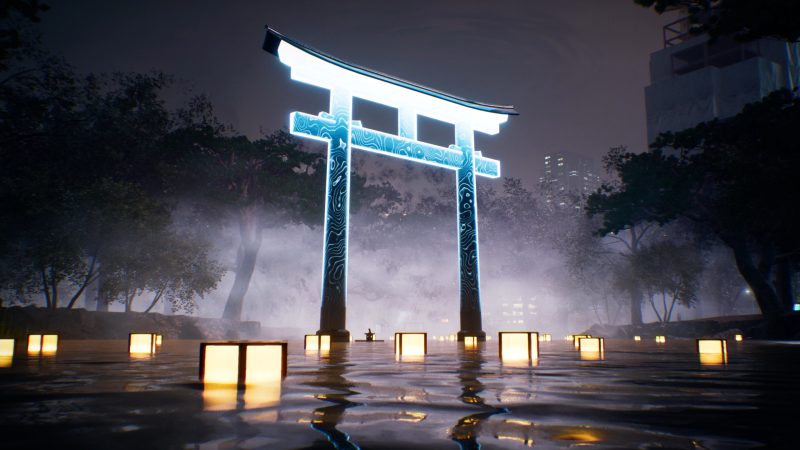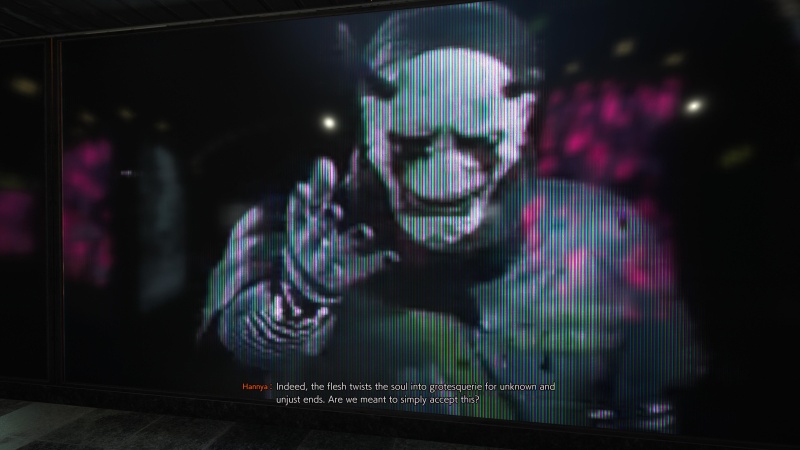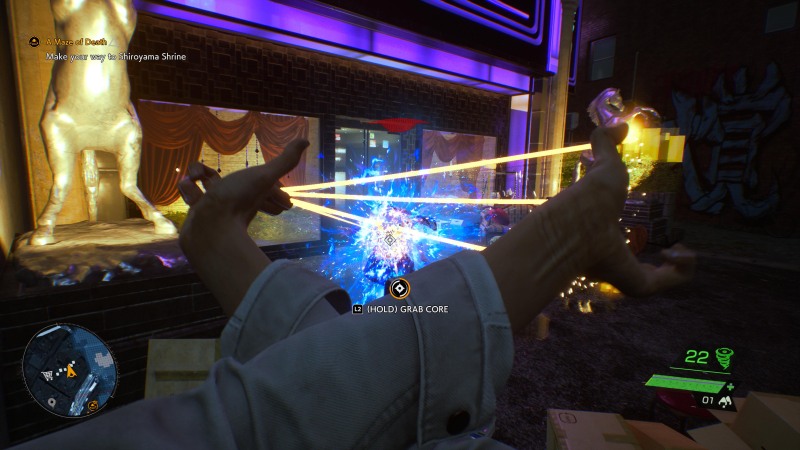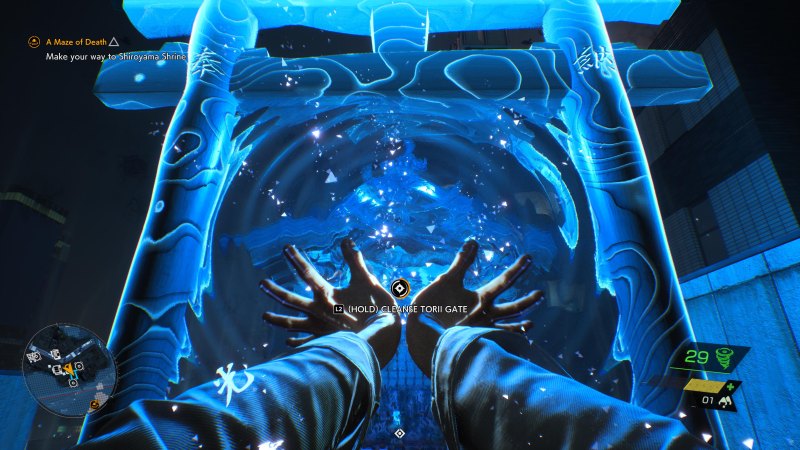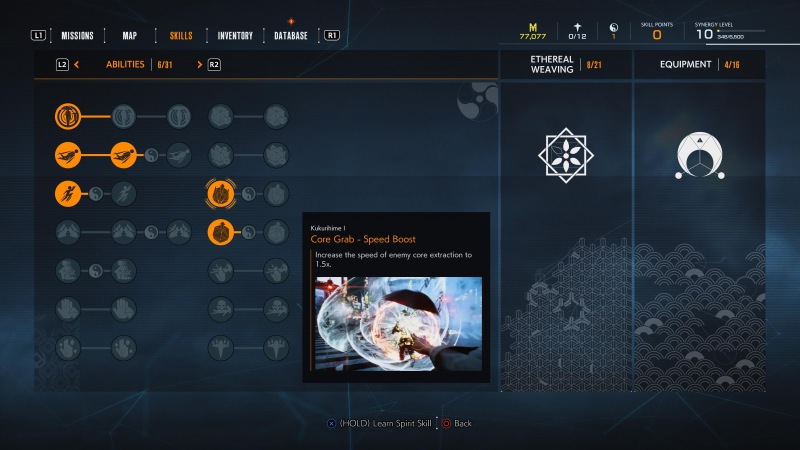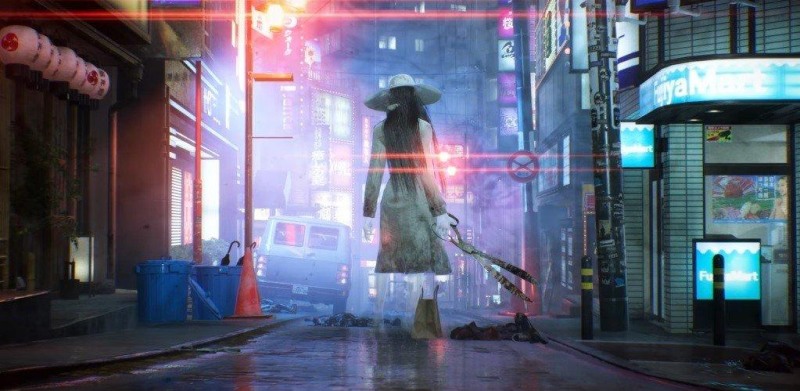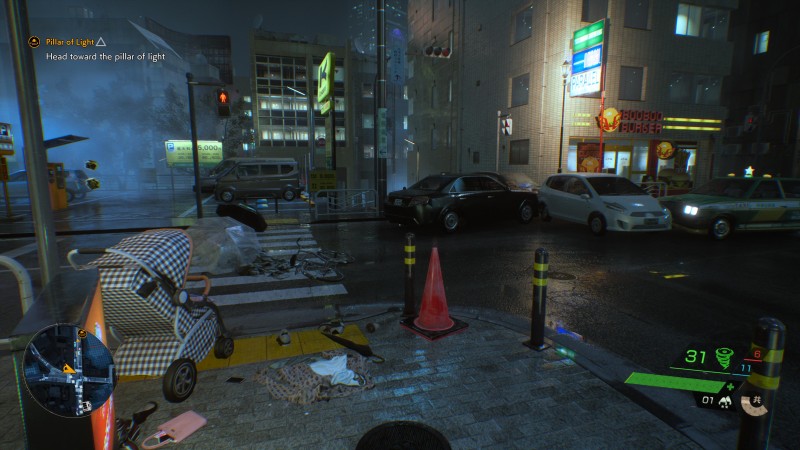Ghostwire: Tokyo PS5 Review – Shinji Mikami needs no introduction. With such a deep and renowned resume in the gaming industry, anything with his name attached to it deserves a try. The same goes for Ghostwire: Tokyo, Mikami’s first foray into open-world games at his latest studio, Tango Gameworks.
While not focused on horror, Ghostwire channels the same energy and execution to create one of the best open-world experiences in recent years.
Ghostwire: Tokyo PS5 Review – Shinji Mikami Strikes A Winning Combination Of Open-World & Horror
Together In One Body
Shortly after a fog rolls through Tokyo, the entire population disappears without a trace. However, your body remains on the streets of the city because you died in an accident before the mass disappearance.
Due to this, a stray spirit, named KK, finds and inhabits your body. With that, you gain the ability to weave different elements and fight off the hostile spirits that now roam around Tokyo.
The character duo spends much of your game time interacting with each other, learning more and more about themselves as they go. Akito pursues his ailing sister who disappeared from the hospital, and KK, a former cop, seeks to stop the masked group of radicalists from taking all the lost souls in Tokyo.
With the soul of Akito’s sister among the lost souls, Akito jumps on the random arrangement that he finds himself in with KK. They don’t dislike each other by any means, but their relationship begins as obvious strangers with a common goal and soon grows into a budding friendship filled with empathy, snark, and common purpose.
Building A Once-Living World
The level of detail placed in Ghostwire is nothing short of AAA. Most textures pop and breathe extra life into the world around you, right down to the little details. Small details here and there lose some fidelity, but you only see those in a handful of places and only when you go hunting for them or randomly come across them.
Draw distance does become a glaring issue, but you only ever see it when you’re on top of tall buildings. Since you spend most of the time underground or on the street between buildings, draw distance doesn’t affect you most of the time. Still, when you see it, you definitely see it.
How you interact with the environment and how the environment reacts to you both play into the immersion of this digital Tokyo. All human beings disappeared, but they leave behind signs that they existed in that moment in time.
Clever Use Of Color
The world is still quiet, but the it reacts to you through colors. When an enemy spots you, everything gets highlighted with red. This coloration comes from light fixtures and street lights changing to reflect your danger level, ranging from white to yellow to red. Lens flare comes off street lights when under alert to further intensify the aesthetic.
The effect doesn’t take over the screen, instead emanating from the lights found on the street. This light then highlights the damp streets of Tokyo to add the coloration to everything without adding a lens filter. It honestly took me a couple hours to notice it because of all the focus I put into fending off enemies, but the touch feels so subtle, yet so cool.
The rainfall itself brings its own effect into the world as well. The most obvious comes from the DualSense controller, which reacts to each droplet that hits you. Tiny localized vibrations all over the controller simulate the effect of falling rain impacting on you, which adds even more realism to the proceedings.
The less obvious touch is what the rain looks like. During lull periods of running around, I noticed that the falling rain looked just a titch off but couldn’t place it. I managed a couple screenshots to find out that the droplets are actually falling kanji. I can’t tell you what they mean, but realizing this fact further adds more mysticism and intrigue to the world created here.
Recede The Fog
While Ghostwire is an open world game, it doesn’t allow you to run rampant throughout the map as you wish. You must find Torii Gates to cleanse the fog from each area of town, and getting to all those places see you also progressing the story.
You get a feeling of an open world without the immediate daunting space to work with. The game then opens it up gradually as you go, still allowing you the ability to wander while keeping progression a part of your routine.
Every open world game needs to provide its fill of things to do, and Ghostwire fulfils those needs. Lost souls sprinkle the landscape, and different side quests direct you into new nooks and crannies of the city. Groups of enemies litter the space as well, and the types of enemies you face out in the wild change based on how far you progress in the story.
At the beginning, your enemies consist of male figures in suits and headless adolescent female figures in school uniforms. After that come heavy-set males and business skirt females as well as little kids in raincoats that alert other enemies of your presence, just to name the first bunch. The enemy variety shows itself regularly.
Ghosting The Ghosts
Dispatching enemies requires you to either completely destroy them or remove their core. Doing so can be done either through open combat or stealth. Stealth gives you a backstab-type dispatch if you sneak up behind enemies, and a bow (with limited ammo, I might add) gives you opportunities to take down enemies from a distance.
Stealth works well in general. Enemies utilize generous sight range, not allowing you to cheese sneaking around like in most games. However, some areas on the map provide unnatural blind spots. Things like barred fences pictured below keep you hidden from sight while some large bushes don’t hide you.
For context, that enemy would see you, even at this angle, if the fence were not there. This strictly comes from occasional map development flaws that make these rare happenings out in the world feel like you got cheated out of a momentary opportunity.
Weaving Through Your Enemies
The other more prominent way to combat the afterlife is through elemental weaving. As you progress through the game, you gain different elements past the original fire, water, and air with the ability to toggle between them on the fly.
Each element has its advantage as well, with water performing sweeping attacks, fire explosive attacks, and air finesse attacks.
Charge attacks come with each element as well, each with their own charge timer and execution quirks. These skills do not auto-lock either, so you must pay attention to how you use them. Resources limit your use of these elements as well.
Defeating enemies and destroying objects around the map give you particles to replenish your supply. So, performing well keeps you weaving through combat while sloppy play leaves you literally empty handed.
These elements also have their own ways to skill up. As you level, you use skill points to improve your ability to weave elements as well as improve the strength of those elements. These skill trees don’t offer an endless supply of upgrades, but you feel the impact that each upgrade brings.
Each cast time reduction, damage increase, and splashing effect all provide much greater impact than most open world games provide in several skill ups.
Ghostwire isn’t all offensive combat, thankfully, since enemies coordinate, flank, and rush you as they work together. L1 allows you to bring up an ethereal shield to mitigate damage. If you block at the moment the attack hits, you perform a Perfect Block, recoiling the attack back at the enemy. This allows defensive flexibility without requiring complicated button input.
The Horror Touch
Well-executed horror in any form keeps even the finest of details in mind. While Ghostwire isn’t horror per se or even truly scary, the attention to detail that comes with the genre remains ever present. This stretches from the layout of the landscape to the little touches and behaviors of enemy character models and even weaving animations.
In claustrophobic areas, the details of the world get concentrated, increasing the intensity of each place you visit. These are the places where Mikami pushes for the tension and suspense of horror games by placing you in more sophisticated scenarios with less room to maneuver.
One enemy that comes to mind immediately is the woman in white who wields oversized scissors. One time, she jumps you from behind and other she corners you in a narrow hallway.
This same enemy introduces another element to the game that further swells the tension: losing your powers. When certain enemies get ahold of you, they pull KK’s soul out of your body, removing your ability to weave elements entirely.
Then, the enemy attempts to cut you off from KK’s floating soul while it tries to cut you down. Recovering KK’s soul brings the powers back instantly, but doing so is much easier said than done.
An Oddity
My final point covers character movement. Running around, sprinting, and navigating rooftops all feel like they should, responding to your ever input as well as responding to the environment you interact with. However, rotating feels peculiar to me. When rotating with the right joystick, Akito slows down to change angles, even when only rotating a couple degrees.
From a horror perspective, I believe this intends to create a weightiness to character movement without debilitating your ability to easily make your way around. At the same time, it feels unnatural. This guy can jump between buildings and hoist himself up onto balconies, but he slows down when rotating.
Over time, I grew accustomed to it, but the feeling of it never goes away, and I always think about it when it happens. It absolutely does not break the game by any stretch, but feeling this constantly puts a damper on a deeply polished overall experience.
Success From Translating Horror Into Action
Ghostwire: Tokyo takes the open world formula and improves it with the touches that come from an expert in the horror genre. A handful of issues, the biggest being rotational speed, do very little to get in the way of an expertly-crafted game. Indeed, the creator of Resident Evil has come up with yet another compelling experience that’s easily worth your time.
Ghostwire: Tokyo is out on PS5 and PC on March 25, 2022.
Review code kindly provided by publisher.
